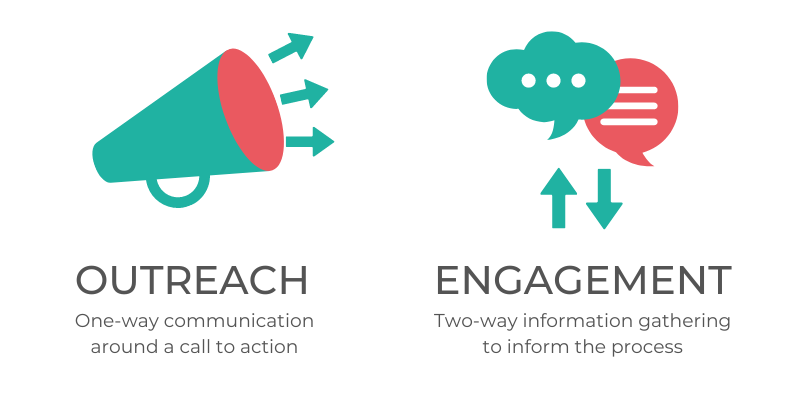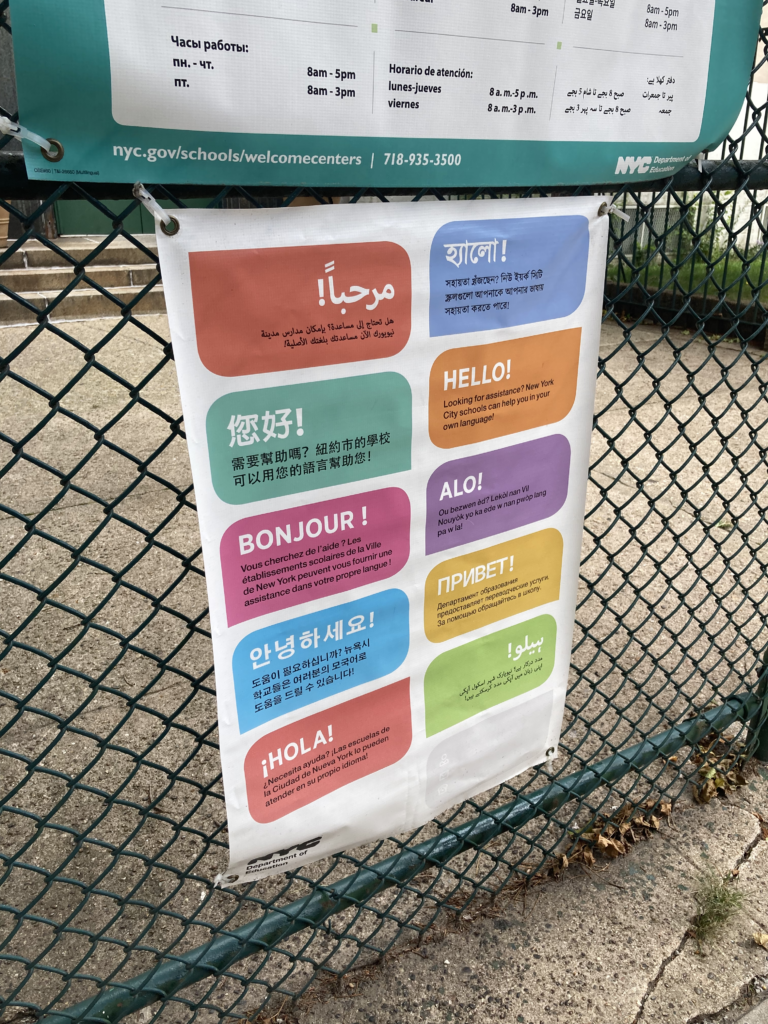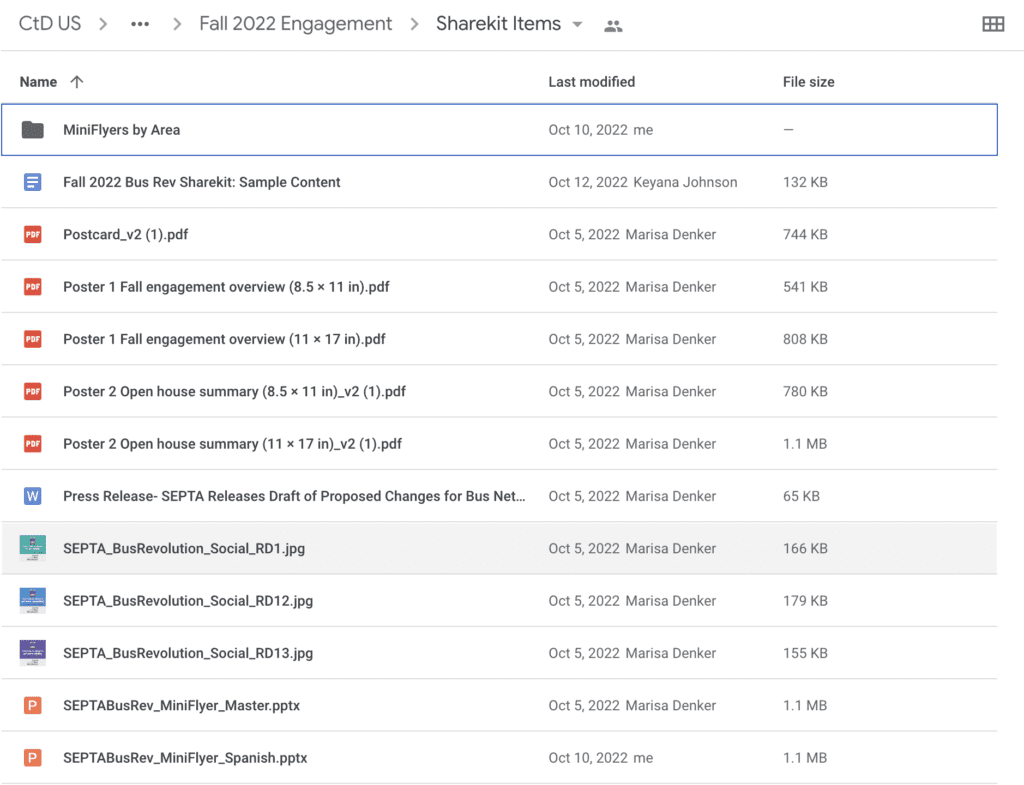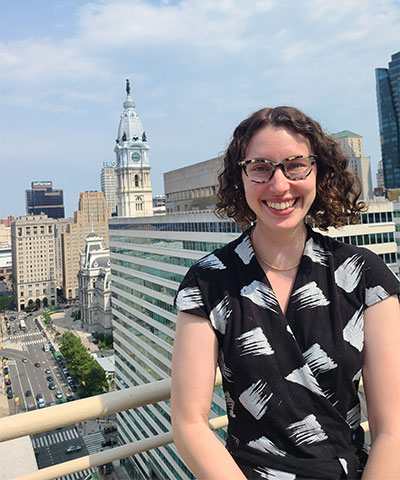16 Nov Layered Outreach for Diverse Audiences
The event is booked. The Zoom call is scheduled. The survey link is live. Now all you need is participants from far and wide – how do you get out the word? Even the best engagement strategies need equally great accompanying outreach strategies, since you need to reach intended audiences to come to the table.
Outreach and engagement are often thought of as synonyms, but they serve very different functions in the context of a project:

- Engagement is a two-way communication that gathers information from the audience to inform a specific decision point in the participatory process
- Outreach is a one-way communication that informs the public about the process, usually including a call to action about a specific engagement method

A weather-resistant banner giving information about NYC public schools in 10 locally spoken languages with easy to understand graphics [Brooklyn, NY]
In my years of working with the public, I have learned a series of important lenses that must be considered when building layered outreach strategies. It’s important, most of all, to think proactively about your intended audience and tailor outreach layers to the needs, timing, and capacity of both participants and the organizations that send out information to locals.
Considering the Digital Divide
The “digital divide” refers to the gap between audiences that have access to broadband internet, opening the door to online resources available to populations. Even within neighborhoods that have access to broadband, the divide can present as lower-speed connections, lack of access to computers themselves, and less digital literacy. [Editor’s Note: You can use the NTIA’s Indicators of Broadband Need Map to determine a neighborhood’s level of access to broadband!]
When developing outreach strategies, it is important to consider how the digital divide affects your audiences. Neighborhoods affected by high poverty rates, high rates of immigrants and refugees, and high percentages of older adults may be less likely, willing, or able to access outreach resources that are only online. Your outreach efforts might not be seen by your most vulnerable residents!
In these cases, adding a layer of in-person outreach is crucial to get a truly representative sample of participants to engage in the process. Flyering is helpful, especially if flyers are weather-resistant and placed in areas of high-volume traffic. Flyers and materials should be available in all languages, or at least the most used languages, prevalent within the target neighborhood. In-person outreach materials can be more effective when shared via a trusted partner – have flyers available in well-loved libraries, send materials home with students and families through schools and youth programs, and attend local meetings to deliver information in person to groups that already gather.
Accounting for Organizational Capacity

Example of a Sharekit for the Bus Revolution project, where files are easily identifiable and multiple languages are provided.
Partnerships are a crucial component of outreach strategies. A trusted organization with a vibrant contact list and knowledge of the neighborhood’s needs are the best conduits for getting out the word. Our team may mock up an email newsletter, a folder full of visuals, and messaging about the project, but organizations and grassroots connectors have the links to get those materials to the right people.
However, partnerships with grassroots organizations often encounter roadblocks mainly concerning capacity and funding models. Especially in cities with high levels of low-income residents, organizations are often simply trying to keep their heads above water and keep their clients safe and housed. Asking organizations to offer additional support with outreach is often a difficult request, since it requires staff time and sometimes even a percentage of their small budget.
When looking for outreach partnerships, it’s important to account for these organizational capacity challenges and make the outreach as easy as possible for organizational partners. Make an easily accessible and shareable ShareKits where all documents can be downloaded by neighborhood members. Send short and easily digestible emails to organizations that are warm but make your request straightforward and understandable. Try to find the easiest way, or preferred way, for organizational staff members to be contacted and use that communication model. Ask for less, and provide more.
Formal and Informal Information Sharing
To successfully provide information about your project to your intended audiences, it’s important to identify both formal and informal ways of sharing information. Creating a press kit, press release, and press list is a fine first step to fulfill a “formal” information strategy (traditional press and online press), but will not reach people who do not follow the media.
Especially if you hope to reach younger audiences or audiences within non-English language groups, outreach must include more informal channels – Facebook groups specific to the geographic area, WhatsApp threads in non-English languages, and text messaging to specific neighborhood leaders. Especially in our 21st Century world, the concept of journalism has become uniquely fragmented, and outreach requires a variety of similarly divided techniques. Look for the locally-beloved blogger and reach out. See if your target audience follows a specific Twitter user. Include physical copies of your flyers or informational packets at local churches, coffee shops, and more. Use data to see who you need to reach, and make a concerted effort to meet those people where they are – online and offline.
___
Engagement is crucial for projects to be representative, accessible, and successful, as we know, but engagement needs equally accessible and high-quality outreach to accompany it. It’s important to understand the neighborhood in order to tailor and layer that outreach to reach the different audiences you intend to reach.
Now go out and write that Facebook post!

Lily Goodspeed is a Senior Associate at Connect the Dots and based in Philadelphia. She is a social impact and economic development professional passionate about accessible and representative public engagement, creative placemaking, and respecting historical context. Lily holds a Master’s in Public Administration from the University of Pennsylvania and has worked within nonprofits, development and real estate companies, and political advocacy organizations for ten years within the Philly region. Her career in grassroots organizing and collective change informs her CTD work on the ground and within neighborhood.
